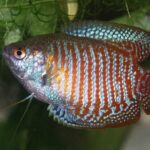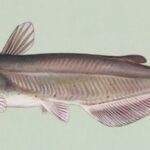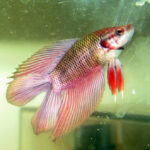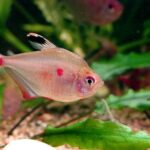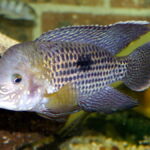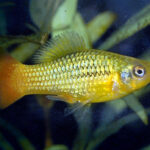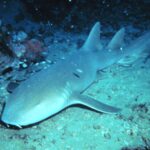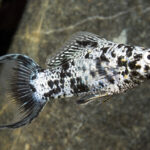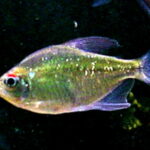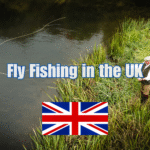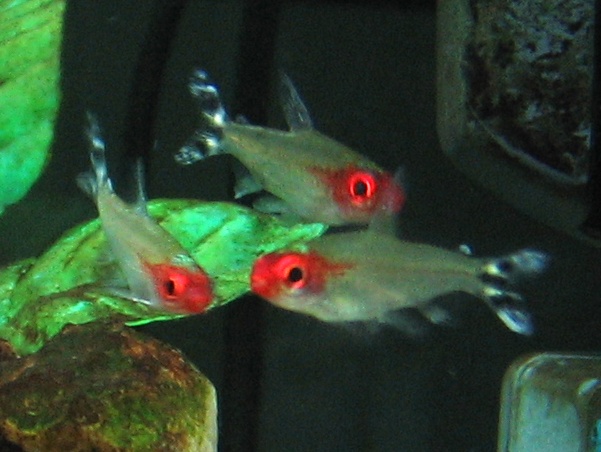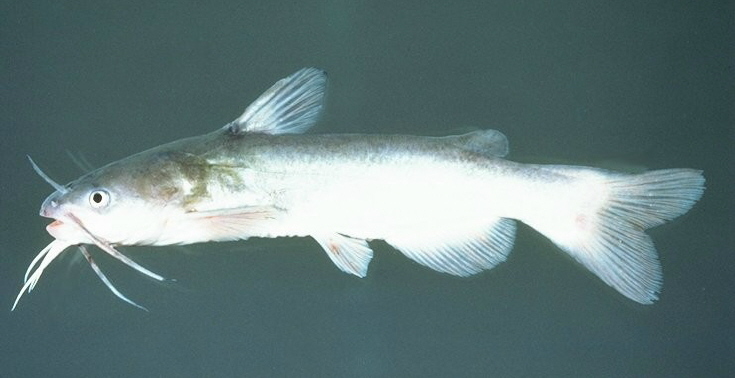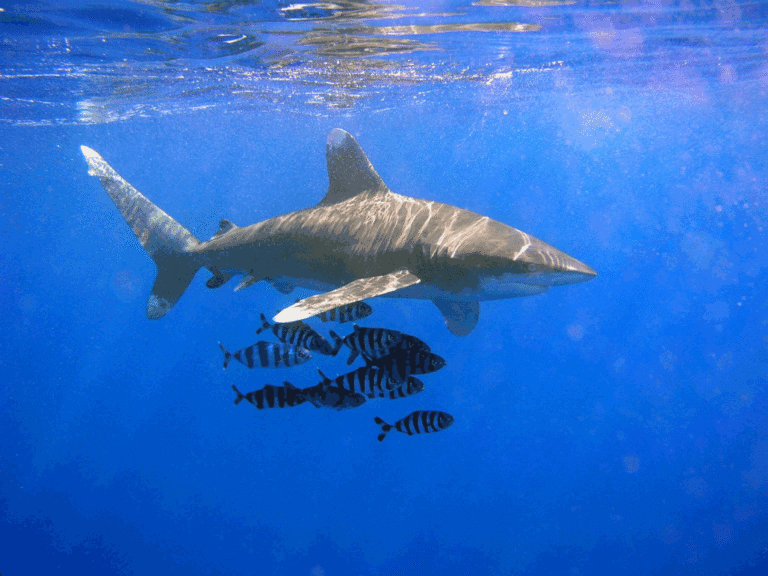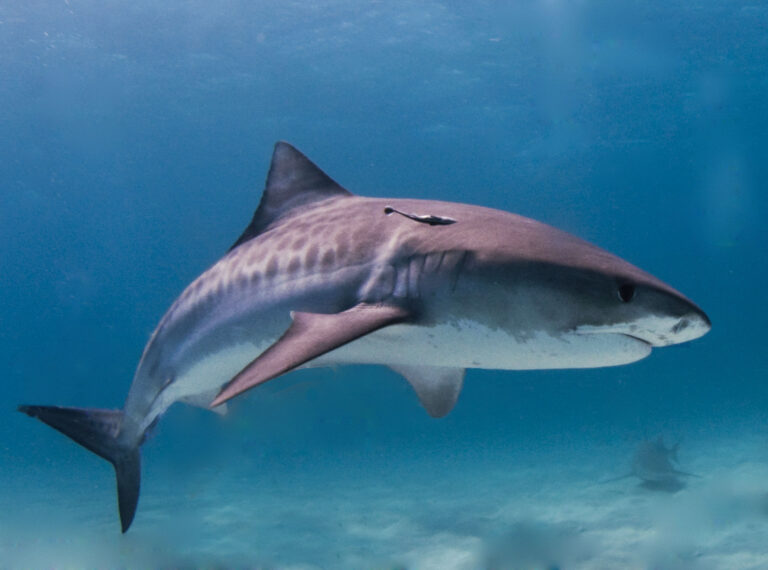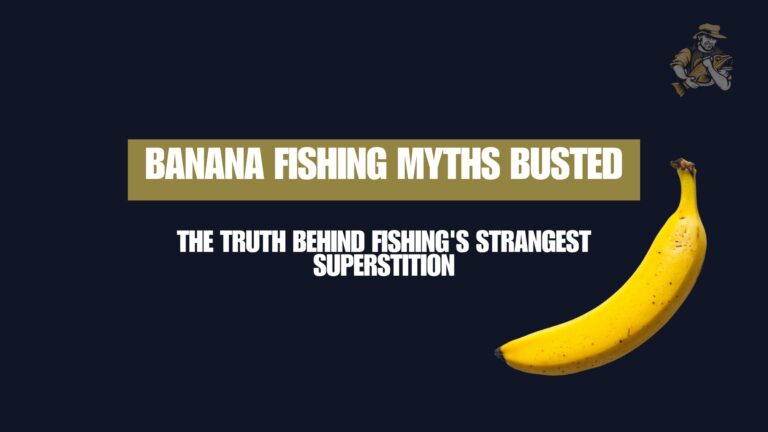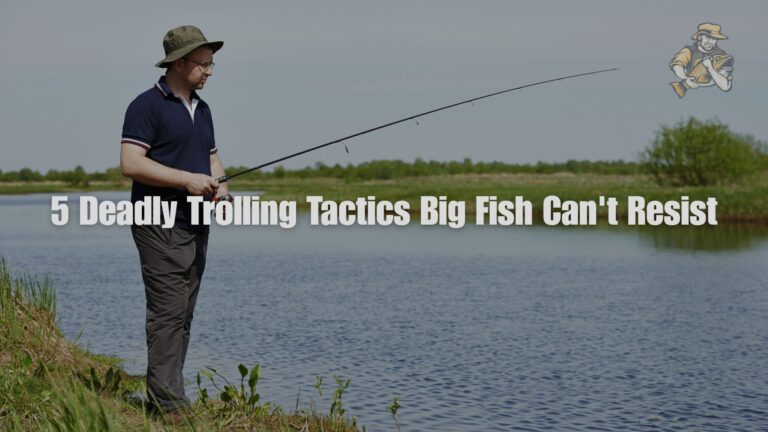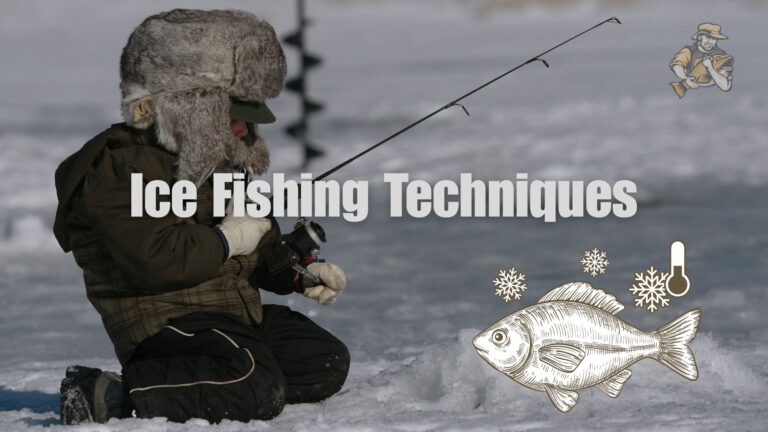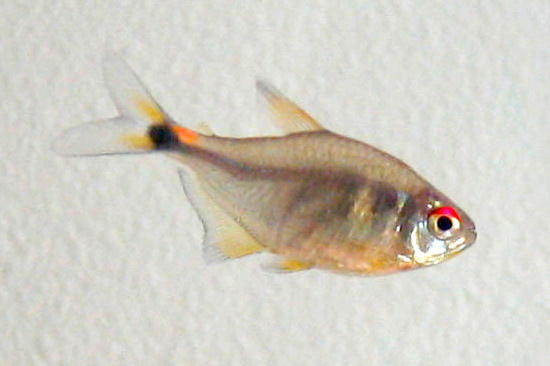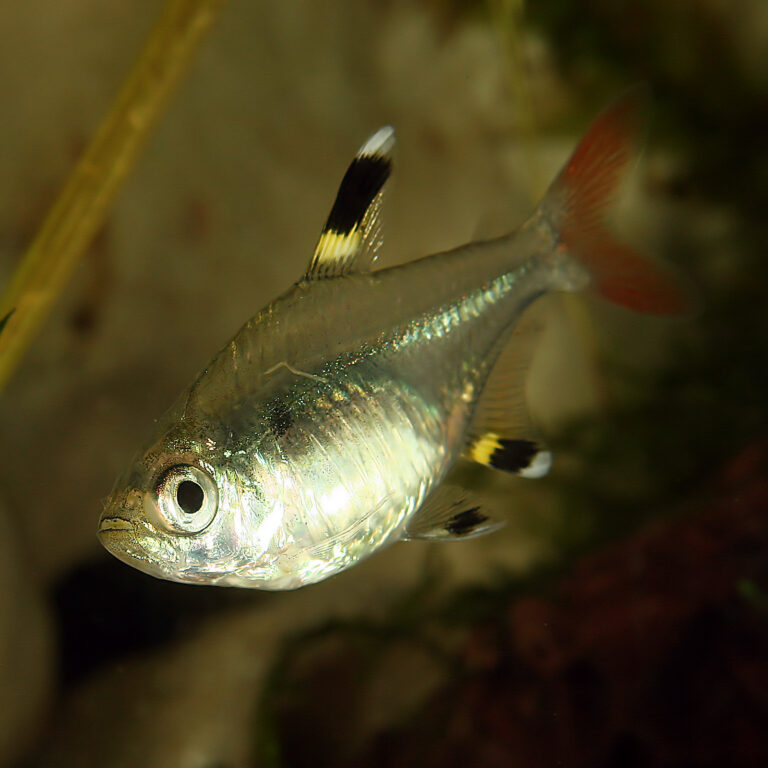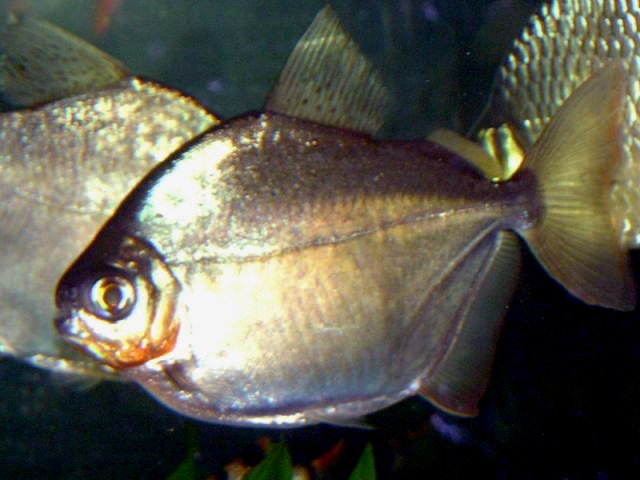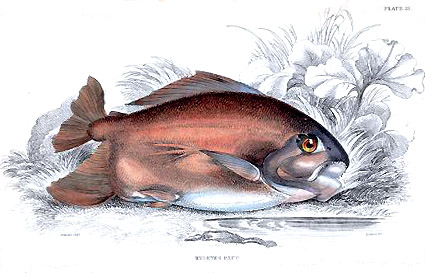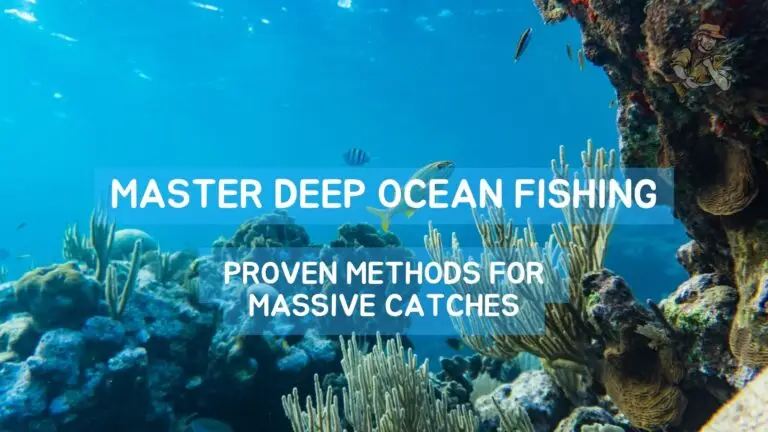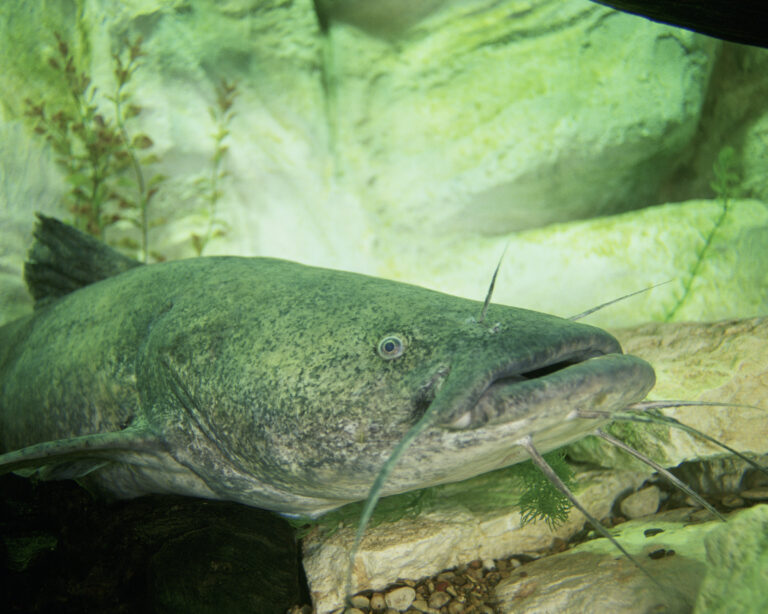Kribensis Cichlid
By Ryan Maron | Last Modified: June 9, 2025
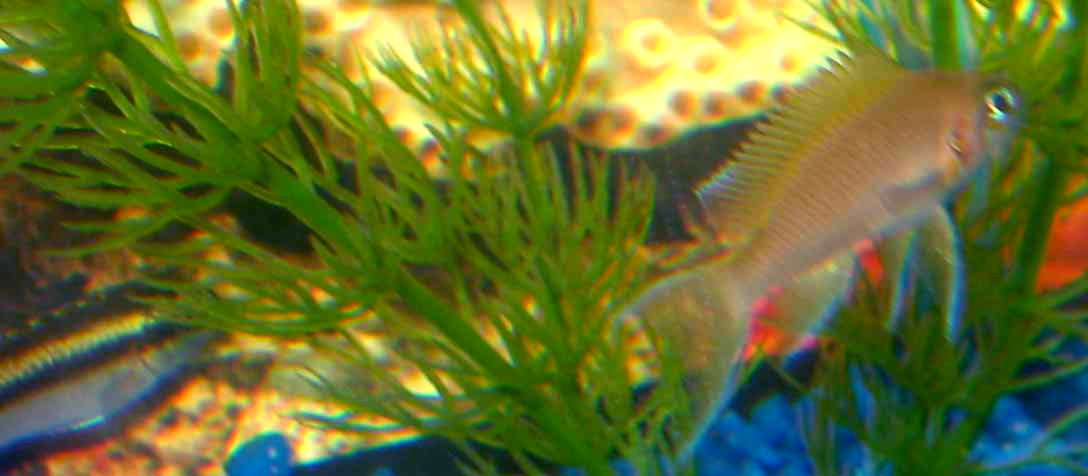
The Kribensis Cichlid (Pelvicachromis pulcher) stands as one of West Africa’s most remarkable freshwater fish species, captivating aquarists and researchers alike with its vibrant coloration and complex social behaviors. This small yet charismatic cichlid has earned recognition not only for its stunning appearance but also for its fascinating reproductive strategies and territorial dynamics. Native to the coastal river systems of Nigeria, Cameroon, and surrounding regions, the Kribensis Cichlid plays a crucial ecological role as both predator and prey within its natural habitat. The species demonstrates remarkable adaptability to varying water conditions, making it an important indicator species for ecosystem health in West African freshwater environments. Its significance extends beyond ecological importance, as this cichlid has become a cornerstone species in the global aquarium trade, contributing to both scientific understanding of cichlid behavior and economic value in ornamental fishkeeping.
| Feature | Details |
|---|---|
| Common Name | Kribensis Cichlid |
| Scientific Name | Pelvicachromis pulcher |
| Family | Cichlidae |
| Typical Size | 8-10 cm (3-4 inches), 15-25 grams |
| Habitat | Shallow freshwater streams and rivers |
| Diet | Omnivorous – invertebrates, algae, detritus |
| Distribution | West Africa (Nigeria, Cameroon) |
| Conservation Status | Least Concern |
Taxonomy & Classification
The Kribensis Cichlid belongs to the genus Pelvicachromis within the diverse family Cichlidae, which encompasses over 1,700 described species worldwide. First scientifically described by Boulenger in 1901, Pelvicachromis pulcher represents the type species of its genus, with the specific epithet “pulcher” meaning “beautiful” in Latin. The genus Pelvicachromis currently includes approximately eight recognized species, all endemic to West and Central African river systems.
Within the broader cichlid phylogeny, Pelvicachromis belongs to the African cichlid lineage, specifically classified under the subfamily Pseudocrenilabrinae. This taxonomic placement distinguishes it from South American and Central American cichlid groups, reflecting distinct evolutionary pathways and biogeographical histories. Recent molecular studies have confirmed the monophyletic nature of the genus Pelvicachromis, supporting its taxonomic validity and revealing close relationships with other West African cichlid genera such as Nanochromis and Parananochromis.
The species exhibits considerable geographical variation across its range, leading to the recognition of several color morphs and potential subspecies. These variations have historically created taxonomic confusion, with some populations previously described as separate species before being synonymized with P. pulcher. Modern ichthyologists continue to investigate the taxonomic status of various Kribensis populations, utilizing both morphological and genetic approaches to clarify species boundaries within this complex group.
Physical Description
The Kribensis Cichlid displays remarkable sexual dimorphism, with males and females exhibiting distinct size differences and coloration patterns. Adult males typically reach lengths of 8-10 centimeters, while females remain slightly smaller at 6-8 centimeters. Males develop more elongated dorsal and anal fins, creating a distinctive silhouette that becomes particularly pronounced during breeding periods.
Male Kribensis showcase brilliant coloration featuring a golden-yellow to olive-green base color along the dorsal region, transitioning to silver-white on the ventral areas. A prominent dark lateral stripe extends from the eye to the caudal peduncle, often breaking into distinct spots or bars depending on the individual’s emotional state and environmental conditions. The dorsal fin displays intricate patterns of red, yellow, and blue coloration, while the anal fin exhibits similar vibrant hues with distinctive ocelli or eye-spots.
Female Kribensis present equally striking but different coloration patterns, most notably characterized by the development of a brilliant cherry-red to magenta coloration on the belly region, particularly intense during breeding readiness. This distinctive ventral coloration serves as a primary sex-identification characteristic and plays a crucial role in mate selection and reproductive signaling. Females also display more subdued dorsal coloration compared to males, with subtle yellow and green tones predominating.
The species possesses the typical cichlid body plan with a laterally compressed, moderately deep body profile. The head features a terminal mouth equipped with pharyngeal teeth adapted for processing both plant and animal matter. The eye placement and size reflect the species’ visual hunting strategies and social communication requirements. Both sexes develop extended fin filaments during peak breeding condition, adding to their overall aesthetic appeal and serving important behavioral functions.
Habitat & Distribution
The Kribensis Cichlid inhabits the coastal river systems of West Africa, with its primary distribution centered in Nigeria and extending into adjacent regions of Cameroon. These fish occupy shallow freshwater environments characterized by soft, slightly acidic water conditions with pH values typically ranging from 5.5 to 7.0. Water temperatures in their native habitat fluctuate between 24-28°C (75-82°F), reflecting the tropical climate of the region.
Natural Kribensis habitats consist primarily of slow-moving streams, tributary systems, and marginal areas of larger rivers where vegetation provides both shelter and feeding opportunities. These environments feature sandy or muddy substrates interspersed with fallen logs, root systems, and aquatic vegetation. The species demonstrates particular affinity for areas with moderate current flow and abundant hiding places, which support their territorial and breeding behaviors.
Seasonal variations significantly influence Kribensis habitat utilization, with fish moving between deeper pools during dry seasons and expanding into shallow marginal areas during periods of increased water levels. These movements correspond with reproductive cycles and food availability patterns. The species exhibits remarkable tolerance for varying water conditions, including temporary exposure to brackish conditions in coastal areas where freshwater systems meet tidal influences.
Human activities have impacted natural Kribensis populations through habitat modification, including dam construction, agricultural runoff, and urban development. However, the species’ adaptability and relatively stable population numbers have prevented significant conservation concerns. Wild collection for the aquarium trade occurs throughout their range, though captive breeding has reduced pressure on natural populations in recent decades.
Diet & Feeding Behavior
The Kribensis Cichlid exhibits omnivorous feeding habits, consuming a diverse array of food items that reflect opportunistic foraging strategies. In natural environments, their diet consists primarily of small invertebrates including chironomid larvae, copepods, ostracods, and various aquatic insects. Plant matter forms a secondary but important dietary component, with algae, detritus, and soft plant tissues contributing essential nutrients and fiber.
Foraging behavior in Kribensis demonstrates both substrate sifting and surface picking techniques. These fish actively excavate sandy areas to uncover buried invertebrates, using their protrusible pharyngeal jaws to process captured prey items. This excavation behavior serves dual purposes, providing food while simultaneously creating and maintaining nesting sites for reproduction. Surface feeding occurs when insects fall onto the water surface or when targeting emerging aquatic insects.
Feeding patterns exhibit distinct temporal components, with peak activity occurring during dawn and dusk periods when prey availability reaches maximum levels. During midday hours, Kribensis typically seek shelter among vegetation or cave structures, reducing feeding activity and metabolic demands. Seasonal variations in food availability influence feeding intensity and dietary composition, with higher invertebrate consumption during rainy seasons when aquatic insect populations peak.
Juvenile Kribensis display different feeding preferences compared to adults, focusing primarily on microscopic zooplankton, algae, and organic particles. This dietary shift reflects changing nutritional requirements and physical capabilities as fish mature. Parental fish demonstrate remarkable feeding coordination during breeding periods, with pairs alternating between territory defense and foraging activities to maintain optimal nutrition while protecting developing offspring.
Behavior & Adaptations
Kribensis Cichlids exhibit complex social behaviors centered around territoriality, pair bonding, and elaborate breeding rituals. These fish establish and defend territories year-round, with territory size varying based on resource availability, population density, and individual size. Territorial boundaries are maintained through displays of aggression including lateral displays, fin spreading, and direct physical confrontations when necessary.
Pair formation represents one of the most fascinating aspects of Kribensis behavior, involving extended courtship rituals and mutual territory establishment. Mated pairs demonstrate remarkable cooperation in territory defense, brood care, and resource management. This partnership extends beyond simple reproduction, with pairs often maintaining long-term bonds and coordinating daily activities throughout multiple breeding cycles.
The species displays sophisticated communication systems utilizing visual signals, body posturing, and color changes to convey information about reproductive status, territorial boundaries, and threat levels. Rapid color shifts allow individuals to signal submission, aggression, or breeding readiness within seconds. These visual communication adaptations prove particularly important in the often turbid waters of their natural habitat where chemical and acoustic signals may be limited.
Shelter-seeking behavior represents a crucial survival adaptation, with Kribensis actively seeking cave-like structures for both daily refuge and breeding sites. These fish demonstrate remarkable ability to modify their environment, excavating substrates to create suitable shelter conditions. This engineering behavior extends to nest construction, where pairs work cooperatively to prepare spawning sites with precise specifications for egg laying and fry protection.
Anti-predator strategies include rapid escape responses, group vigilance, and strategic use of cover. When threatened, Kribensis can quickly dart into cave structures or dense vegetation, utilizing their intimate knowledge of territory topography. Color changes also serve defensive functions, with fish rapidly adopting cryptic coloration patterns when predator threats are detected.
Reproduction & Life Cycle
The reproductive biology of Kribensis Cichlids represents one of the most sophisticated breeding systems observed among small cichlid species. These fish are cave spawners, requiring enclosed spaces for successful reproduction and exhibiting elaborate parental care behaviors that extend well beyond initial spawning activities. Sexual maturity occurs at approximately 6-8 months of age when fish reach 4-5 centimeters in length.
Breeding cycles are closely tied to environmental conditions, with optimal spawning occurring during periods of increased water temperature and food availability. In natural habitats, this typically corresponds with rainy seasons when water levels rise and invertebrate populations peak. Captive populations may breed year-round under stable conditions, though seasonal variations in breeding intensity often persist.
Courtship behaviors begin with males establishing and preparing potential spawning sites, typically involving excavation of cave-like structures or cleaning of existing cavities. Males then attract females through elaborate displays involving intense coloration, fin extensions, and ritualized swimming patterns. Receptive females respond with specific color changes, particularly the intensification of ventral red coloration that signals breeding readiness.
Spawning occurs within prepared cave sites, with females depositing 50-300 eggs depending on fish size and condition. Eggs are attached to the cave ceiling or walls and are immediately fertilized by attending males. The female assumes primary responsibility for egg care, including fanning, cleaning, and protection, while males focus on territory defense and entrance guarding.
Incubation requires 48-72 hours depending on water temperature, with hatching producing larvae that initially remain attached to spawning substrates via yolk sacs. Free-swimming fry emerge after 5-7 additional days and are shepherded by both parents in coordinated foraging groups. Parental care continues for 3-6 weeks, with gradually decreasing intensity as fry develop independence and swimming capabilities.
The species exhibits interesting sex determination mechanisms influenced by environmental factors including pH and temperature. Slightly acidic conditions tend to produce female-biased sex ratios, while neutral to alkaline conditions favor male development. This environmental sex determination provides adaptive advantages for population regulation under varying habitat conditions.
Predators & Threats
Natural predators of Kribensis Cichlids include larger fish species, aquatic birds, and occasionally reptiles that inhabit the same freshwater ecosystems. Piscivorous fish such as larger cichlids, catfish, and characins pose the primary predation threat, particularly to juvenile and sub-adult Kribensis. Adult fish benefit from their territorial behavior and shelter-seeking adaptations, which significantly reduce predation vulnerability compared to more exposed species.
Avian predators including kingfishers, herons, and other wading birds represent significant threats, especially during periods when Kribensis venture into shallow water areas for feeding or territorial activities. These aerial predators have driven the evolution of rapid escape responses and cryptic coloration patterns observed in wild populations. The species’ preference for areas with overhead cover reflects these predation pressures.
Habitat degradation represents the most significant contemporary threat to Kribensis populations across their natural range. Agricultural expansion has led to increased sedimentation and chemical runoff into river systems, altering water chemistry and reducing habitat quality. Palm oil plantations and urban development have eliminated or fragmented critical habitat areas, particularly affecting breeding and nursery sites.
Water pollution from industrial activities and inadequate waste management systems poses ongoing challenges for Kribensis populations in heavily developed regions of their range. Heavy metals, pesticides, and organic pollutants can accumulate in aquatic ecosystems, affecting fish health, reproductive success, and food web dynamics. These cumulative impacts may have long-term consequences for population stability and genetic diversity.
Climate change presents emerging threats through altered precipitation patterns, temperature increases, and modified river flow regimes. Changes in seasonal flooding patterns could disrupt breeding cycles and affect the availability of critical spawning habitats. Rising temperatures may push some populations beyond their thermal tolerance limits, particularly in already marginal habitats.
Collection pressure for the aquarium trade, while reduced through captive breeding programs, continues to impact some wild populations. Unsustainable collection practices and use of harmful capture methods can affect local population structures and ecosystem health. However, the development of successful captive breeding operations has significantly reduced demand for wild-caught specimens in recent years.
Conservation Status
The International Union for Conservation of Nature (IUCN) currently classifies the Kribensis Cichlid as “Least Concern,” reflecting relatively stable population numbers across most of its natural range. This classification is based on the species’ wide distribution, adaptability to varying environmental conditions, and successful reproduction in both natural and modified habitats. However, localized population declines have been documented in areas experiencing severe habitat degradation or water quality deterioration.
Population monitoring efforts in West Africa have revealed mixed trends, with some river systems maintaining healthy Kribensis populations while others show evidence of decline or local extirpation. The species’ relatively small home range requirements and ability to persist in modified habitats provide some resilience against habitat loss, though cumulative impacts from multiple stressors remain concerning.
Conservation efforts for Kribensis have primarily focused on habitat protection and restoration within key river systems. Several protected areas in Nigeria and Cameroon encompass important Kribensis habitats, though enforcement and management effectiveness vary significantly across sites. Community-based conservation initiatives have shown promise in some regions, particularly where local communities derive economic benefits from sustainable aquarium fish collection.
The success of captive breeding programs represents a significant conservation achievement, reducing pressure on wild populations while maintaining genetic diversity in cultured stocks. International cooperation between aquarium societies, commercial breeders, and conservation organizations has facilitated the development of breeding protocols and genetic management strategies for long-term population sustainability.
Research priorities for Kribensis conservation include improved population monitoring techniques, habitat restoration methodologies, and assessment of climate change impacts. Genetic studies are needed to better understand population connectivity and identify distinct evolutionary lineages that may require separate conservation consideration. Collaboration between research institutions, government agencies, and local communities will be essential for effective long-term conservation planning.
Human Interaction
The relationship between humans and Kribensis Cichlids extends back decades through the global aquarium trade, where these fish have become one of the most popular and widely kept African cichlid species. Their manageable size, stunning coloration, and fascinating behaviors have made them favorites among both novice and experienced aquarists worldwide. The species’ relative ease of breeding in captivity has contributed to its widespread availability and reduced dependence on wild collection.
Commercial aquaculture operations across multiple continents now produce thousands of Kribensis annually, supporting a substantial international trade valued in millions of dollars. These operations have developed sophisticated breeding techniques and strain selection programs that have enhanced coloration and reduced disease susceptibility in captive populations. Some commercial strains now exhibit more intense coloration than wild specimens, reflecting selective breeding efforts over multiple generations.
In their native range, Kribensis hold cultural significance for local communities, though they are not typically targeted for subsistence fishing due to their small size. However, they may contribute to local food webs and ecosystem services that support other economically important species. Some communities have developed sustainable collection practices for the aquarium trade, providing supplemental income while maintaining population stability.
Educational value represents another important aspect of human-Kribensis interactions, with these fish serving as excellent subjects for teaching cichlid biology, behavior, and conservation in academic settings. Their complex breeding behaviors and parental care make them ideal for behavioral studies and undergraduate research projects. Many scientific publications have utilized Kribensis as model organisms for investigating cichlid evolution and ecology.
The species has also contributed to our understanding of fish behavior and cognition through numerous research studies examining territory establishment, mate choice, and parental care strategies. These investigations have provided insights applicable to broader questions in evolutionary biology and animal behavior. Similar complex behaviors can be observed in various cichlid species maintained in aquarium settings.
Interesting Facts
Kribensis Cichlids possess several remarkable characteristics that distinguish them from other freshwater fish species. One of the most fascinating aspects is their ability to change color rapidly in response to emotional states, social situations, and environmental conditions. These color changes can occur within seconds and involve dramatic shifts in intensity and pattern distribution across the entire body surface.
The species exhibits extraordinary parental care behaviors that rival those of much larger cichlid species. Parent fish have been observed teaching their offspring specific foraging techniques, leading fry to productive feeding areas, and even demonstrating how to recognize and avoid potential threats. This level of behavioral complexity was once thought to be exclusive to larger, more advanced vertebrates.
Female Kribensis possess the unique ability to control the sex ratio of their offspring through behavioral and physiological mechanisms. By selecting spawning sites with specific pH levels and environmental conditions, females can influence whether their eggs develop into predominantly male or female offspring. This adaptive strategy allows populations to adjust sex ratios based on local environmental conditions and social dynamics.
The species demonstrates remarkable problem-solving abilities, including the capacity to navigate complex three-dimensional environments and remember the locations of food sources, shelter sites, and territorial boundaries over extended periods. Laboratory studies have documented their ability to learn from experience and modify behaviors based on changing environmental conditions.
Kribensis possess specialized pharyngeal teeth that function as a secondary set of jaws, allowing them to process food items more efficiently than species with only oral teeth. This adaptation enables them to exploit a wider range of food sources and extract nutrients from plant materials that other fish cannot digest effectively.
The species has been successfully hybridized with other Pelvicachromis species in captive settings, though such hybrids rarely occur in nature due to behavioral and ecological differences between species. These hybridization studies have provided valuable insights into cichlid evolution and speciation processes throughout Africa. Aquarists interested in breeding behaviors might also appreciate the complex reproductive strategies seen in Betta fish breeding programs.
Frequently Asked Questions
How long do Kribensis Cichlids live in captivity?
Kribensis Cichlids typically live 5-8 years in well-maintained aquarium conditions, with some exceptional individuals reaching up to 10 years. Lifespan depends significantly on water quality, diet, stress levels, and genetic factors. Proper care including stable water parameters, varied nutrition, and appropriate tank mates can maximize longevity in captive populations.
What water conditions do Kribensis require for successful breeding?
Optimal breeding conditions include soft, slightly acidic water with pH 6.0-6.8, temperature 26-28°C (79-82°F), and minimal water hardness below 10 dGH. Cave-like structures or flowerpots provide essential spawning sites, while good filtration and regular water changes maintain the stable conditions necessary for successful reproduction and fry development.
Are Kribensis Cichlids aggressive toward other fish species?
Kribensis display moderate territorial aggression, particularly during breeding periods when they defend spawning sites and protect offspring. They coexist peacefully with similarly sized, non-aggressive species in appropriately sized aquariums with adequate hiding places. Aggression increases significantly in overcrowded conditions or inadequately structured environments.
How can you distinguish between male and female Kribensis?
Sexual differences become apparent at maturity, with males growing larger (8-10 cm vs 6-8 cm), developing more pointed fins, and displaying brighter overall coloration. Females exhibit distinctive cherry-red to magenta belly coloration, especially when breeding, and maintain more rounded body profiles. Males also develop longer fin extensions and more prominent head features.
Conclusion
The Kribensis Cichlid stands as a remarkable example of evolutionary adaptation and behavioral complexity within West African freshwater ecosystems. Its role as both predator and prey, combined with sophisticated reproductive strategies and territorial behaviors, demonstrates the intricate ecological relationships that maintain biodiversity in tropical river systems. Through successful captive breeding programs and continued research efforts, this species continues to contribute valuable insights into cichlid biology while maintaining stable populations across its natural range. The Kribensis serves as an important ambassador for African freshwater conservation, highlighting the need for continued habitat protection and sustainable management practices in an era of increasing environmental challenges.
Share The Article:
More Fish Species:
-
Rummy Nose Tetra
The Rummy Nose Tetra stands as one of the most distinctive and recognizable small freshwater fish species in South…
-
White Catfish
The White Catfish represents one of North America’s most adaptable freshwater species, serving as both an important commercial fish…
-
Oceanic Whitetip Shark
The Oceanic Whitetip Shark (*Carcharhinus longimanus*) stands as one of the ocean’s most formidable and recognizable apex predators, distinguished…
-
Convict Cichlid
The Convict Cichlid (Amatitlania nigrofasciata) stands as one of the most recognizable and widely distributed freshwater fish species in…
-
Tiger Shark
The Tiger Shark (Galeocerdo cuvier) represents one of the ocean’s most formidable apex predators, earning its distinctive name from…
-
Pleco
The **Pleco**, scientifically known as *Pterygoplichthys multiradiatus* (common pleco), represents one of the most recognizable and ecologically significant groups…
Discover
-
Shore Fishing for Beginners: 5 Odd Techniques That Actually Work
I’ve spent more mornings than I can count standing on the shores of Michigan lakes watching boats drift by,…
-
Banana Fishing Myths Busted: The Truth Behind Fishing’s Strangest Superstition
Ask any hardcore angler about bringing a banana on their boat, and you might get a reaction stronger than…
-
5 Deadly Trolling Tactics Big Fish Can’t Resist
The first time I watched a 40-pound king salmon completely ignore my perfect trolling setup, I wanted to throw…
-
Ice Fishing Techniques for Anglers in 2025
Last January, I was out on Higgins Lake during that brutal cold snap – you remember, when it dropped…
-
East Coast Surf Fishing: Targeting Striped Bass and Bluefish from Shore
When I first tried East Coast surf fishing nearly 15 years ago, I was absolutely terrible at it. I…
-
Yellowfin VS Bluefin Tuna: Which Should You Target? (Expert Guide)
Let’s be honest – the first time I saw a yellowfin and bluefin tuna side by side at the…
Discover
-
Head and Tail Light Tetra
The Head and Tail Light Tetra (*Hemigrammus ocellifer*) stands as one of South America’s most distinctive characin species, instantly…
-
Pristella Tetra
The Pristella Tetra (Pristella maxillaris) stands as one of South America’s most distinctive freshwater aquarium species, renowned for its…
-
Silver Dollar Fish
The Silver Dollar Fish (*Metynnis argenteus*) stands as one of South America’s most recognizable freshwater species, renowned for its…
-
Pacu Fish
Pacu fish represent one of South America’s most ecologically significant freshwater species, encompassing several closely related members of the…
-
Master Deep Ocean Fishing: Proven Methods for Massive Catches
There’s something almost magical about heading far offshore, where the continental shelf drops away and you’re floating above thousands…
-
Flathead Catfish
The Flathead Catfish stands as one of North America’s most formidable freshwater predators, commanding respect from both anglers and…


